The Jabra Elite 10 can do a lot and have some clever features that competitors in the same price range of around 250 euros do not offer. Thanks to support for Dolby Atmos, as well as head tracking and a semi-open design, they guarantee hours of sound enjoyment without complaints about pressure. However, unfortunately, there are still some minor problems to contend with…
- Sound
- Dolby Atmos support incl. head tracking
- Wearing comfort
- Transparency mode
- High-resolution Bluetooth codecs are still missing
- App implementation not yet bug-free
Table-of-contents
The Elite 10 are Jabra’s new top-of-the-range model and they support Dolby Atmos, including head tracking. Their “Advanced ANC” is also new: With this technology, infrasound waves measure the auditory canal and algorithms detect various noises and wind conditions to filter out environmental noise. The noise cancelling thus dynamically adapts to suit the environmental conditions.
But it’s not just the inside workings that have changed; Jabra has also done some development work on the design of these in-ears because their “ComfortFit technology” has a significant influence on the comfort of the Elite 10 and on how long they can be worn. But first things first…
Package
The Jabra Elite 10 come in five colours titanium black, gloss black, matte black, cocoa (limited edition) and beige and are available for a recommended retail price of 249.99 euros.
In addition to the in-ears (5.7g each, IP57 protection rating), the package includes the charging case (45.9g, IP54 protection rating), a USB-A to USB-C charging cable and four pairs of earpieces in different sizes.
Wearing comfort
The new design of the Jabra Elite 10 relies on the manufacturer’s own “ComfortFit” technology. This is semi-open, as the earmoulds (EarGels) are oval-shaped and cannot be placed particularly deep into the ear canal. This is to reduce the pressure in the ear canal while still closing it effectively. Thanks to the soft silicone skin that covers the in-ears, the fit is stable and secure
However, these headphones fly off with vigorous shakes of the head, so we recommend the Jabra Elite 8 Active, which was introduced at the same time as specialist headphones for active use and high-impact sports. Expect our review of the Elite 8 Active shortly.
If you would like to use other earpieces you will have to look very carefully. The triangular driver opening is so particular that third-party ear tips will not fit. Foam tips (Comply) can be installed, but they do not fit as tightly as the originals. Therefore, if you need a replacement, you must order directly from the manufacturer.
The in-ears themselves barely protrude from the ears thanks to the flat shape of the top, which is good news for dedicated wearers of hats.
Finally, a word about the workmanship of the Jabra Elite 10: The in-ears themselves gave no cause for criticism, and the case also appeared to be of good quality. The magnets lock the in-ears securely but not too tightly, and the case can be opened easily with just one hand. However, the lid of the device we tested was not one hundred per cent flat, so the gap on the left was slightly larger than on the right.
Bluetooth: How does the Jabra Elite 10 transmit?
With Bluetooth 5.3, the Jabra Elite 10 are equipped with state-of-the-art technology. High-resolution codecs are missing for the time being, but according to the manufacturer, they will soon be added via a Bluetooth Low Energy (LE) firmware update, including LC3 and LC3plus. For the time being, you will have to make do with SBC and AAC. For Apple iPhone and iPad users, nothing will change in the future because they only support the two codecs mentioned above.
Thanks to Google Fast Pair and Microsoft Swift Pair, the Jabra Elite 10 are automatically displayed in a pop-up window on an Android device or Windows PC when the charging case is opened – so you don’t need to search for the Elite 10 in the system settings.
Using Multipoint, you can connect the Jabra Elite 10 to a maximum of two players at the same time, and this allows you to switch seamlessly between a smartphone and a computer, for example. In practice, this worked very well, as did the single mode, which allowed the in-ears to be used on just one side. Depending on whether the left or right in-ear is used, there were limitations in the controls, as they are different on both sides and do not adjust automatically.
However, the Jabra Elite 10 do not offer a gaming mode to reduce the latency between picture and sound.
The wireless link was stable and long-range both indoors and outdoors. Unfortunately, twice during our test, this happened: the right in-ear did not make a sound after removing it from the case and inserting it into the ear. The left one droned merrily along, while the right one could only be adjusted by reinserting it into the case and removing it again.
Battery life
According to the manufacturer, the Jabra Elite 10 provide a running time of eight hours, and this is reduced to about six hours when ANC is activated. The charging case extends the battery life to up to 36 hours without noise cancelling and 27 hours with noise cancelling. The case can be charged wirelessly on a corresponding charging mat (Qi), and also via USB-C. The latter takes about three hours, while a fast charge of five minutes tops them up for about one hour of music playtime.
In practice at medium volume, we managed to achieve these values – give or take a few minutes.
Operation
Jabra uses a button control for the Elite 10. The pressure point was successful, and the in-ears were not pressed too far into the ear canal. Incorrect operation was effectively prevented by not using capacitive touch surfaces, which meant that straightening the in-ears did not trigger any unwanted commands. You can also always get to grip the edges when you touch them.
The left earphone switches between ANC and transparency mode with a single press; but if you want to use the third function, “Off”, you have to set it up via the Sounds+ app. A double press starts a voice assistant or Spotify. Three presses are not assigned in the factory settings, but they can be configured via the app. A press and hold reduces the volume.
The right EarBud controls media playback as well as calls: one press to play/pause, a double press to jump one track forward, three times goes one track back or restarts the track. Pressing and holding increases the volume accordingly.
This worked reliably and the Jabra Elite 10 always implemented commands with minimal delay.
Sounds+ App
As usual with Jabra, the smartly designed app that works as a control centre offers many options for adjusting the Elite 10 according to your own needs. However, it was not possible to carry out the wonders of detailed configuration like with the Technics EAH-AZ80 or the LG TONE Free DT90Q for the Jabra Elite 10. The control options didn’t really go far enough for us. The option to change the volume is fixed to press and hold and cannot be changed. If you activate Google Assistant, it overrides the volume change so that it then has to be adjusted either on your smart device or by voice command.
As yet, the implementation does not seem to be flawless. In addition to some strange-sounding sentences, there were also problems with the display of text blocks in the Android app, and the soundscape selection list (background noises such as the sound of the sea, birds chirping, etc.) remained sporadically empty in the iOS app, and this can only be solved by (re)registering the headphones in Android or iOS.
The Sound+ app not only offers sound settings – six EQ pre-sets and a 5-band EQ can be used for this – but firmware updates, the auto-play/auto-pause feature, and sidetone for calls or “Find My Jabra” can also be found here. The latter searches for the last known location of the headphones.
How do the Jabra Elite 10 sound?
With their 10 millimetre drivers, the Jabra Elite 10 had a clean resolution in the frequency range of 20 Hz to 20 kHz.
With the EQ in neutral, the bass range was defined, present and did not mask or spill into the frequency ranges above it, even at high energy. Tonally, bass drums and instruments were captured beautifully and distinctly.
The mids play quite neutrally and processed voices clearly, and electric guitars or lead synths did not cut into the ears.
The treble range, on the other hand, seemed slightly boosted and brought out the details of a mix nicely, but you should not expect proper audiophile clarity in the upper registers. At full volume, the Elite 10s started to hiss slightly with spiky mixes or sibilants.
Due to their design, in-ears or EarBuds cannot reproduce the virtual stage as deep or wide as vividly as over-ears can, but the Elite 10 did their job very well. With the track “Goto 10” by Amon Tobin, for example, panoramic movement, reverb tails and details were still well captured.
A highlight of the Jabra Elite 10 was the support for Dolby Atmos, including head tracking. Thanks to a partnership with Dolby, the Elite 10 supports this form of spatial audio. To use it, simply activate the corresponding function or head tracking in the Sound+ app. If you move your head to the left, the sound source stays in front of you, relatively speaking, so that voices or music move to the right. As with the Apple AirPods Pro 2, if you don’t turn your head back, the signal will pick up again.
This worked very well in practice, and Dolby Atmos content showed an enhanced spatiality. But it did not work equally well with all content; sometimes, the bass range seemed slightly washed out. Nevertheless, details that were not noticeable before can be increased, provided the content has been prepared accordingly. For films with a Dolby Atmos soundtrack, however, we would have hoped for more spatiality – but here, our expectations were perhaps a little too high.
How good is the Jabra Elite 10’s noise cancelling (ANC)?
Jabra’s own “Advanced ANC” is said to be twice as powerful as Jabra’s standard ANC. The noise suppression was powerful, adapted to the conditions of the environment and, in particular, filtered out low-frequency sound components. The background noise was pleasantly restrained and was not noticeable during media playback. It was noticeable that the algorithm attenuated monotonous noise more strongly after a few seconds.
Comparison – Noise Cancelling: Jabra Elite 10 Vs. Apple AirPods Pro 2 Vs. Bose Quiet Comfort EarBuds II Vs. Sony WF-1000XM5
In our tests, we directly compared the noise cancelling of the above-mentioned competitor models with the Jabra Elite 10. In addition to all kinds of everyday noises, such as turbine sounds or train noise, we also played white noise with each headphone. We found that the Bose QuietComfort EarBuds II were ahead of the Apple AirPods Pro 2, closely followed by the Sony WF-1000XM5 and then came the Jabra Elite 10. So if you are explicitly looking for the best ANC, you should take a closer look at the headphones that ranked 1 and 2.
The Jabra Elite 10’s special HearThrough feature
The five-level adjustable transparency mode, which Jabra calls the “HearThrough function”, sounded natural so that conversations or platform announcements could be heard quite clearly. The background noise increased slightly depending on the level but was not annoying even at the highest level.
The most special feature of Jabra’s HearThrough function, however, was its ability to adapt to windy conditions. If the in-ears detected wind, they switched off the external microphones after a few seconds, and the noise was significantly reduced. It was not a complete cancellation, but in our test, we had cause to be enthusiastic about this functionality. Of course, this did not work in very short gusts of wind.
Making calls with the Jabra Elite 10
The voice quality of the Jabra Elite 10 was good during phone calls. The headphones strongly filtered background noise, with wind noise barely getting through. However, this didn’t leave much naturalness in the voice. But when you use the six-step sidetone, your own voice becomes audible in the headset, which makes a more natural telephone conversation possible. The call quality can also be adjusted with the EQ pre-sets “Neutral”, “Treble” and “Bass”.
Conclusion
The Jabra Elite 10 are state-of-the-art True Wireless in-ears that sounded really good and – thanks to their special semi-open design – they can be worn for hours without any pressure discomfort. Highlights of these in-ears included the HearThrough mode, the upscale IP certification and the case, and these are certainly unique selling points for this price range. The noise cancelling worked effectively but did not filter as strongly as that of Apple, Bose and Sony. There were still some teething problems in the Sounds+ app, and there was a lack of high-resolution Bluetooth codecs, but this “only” makes a difference if your device is from the Android world.
At the end of the day, the Jabra Elite 10 gives you high-quality True Wireless in-ears in trendy colours that also do a great job when you are binge-watching your favourite shows, thanks to the inclusion of Dolby Atmos and head tracking.
Technical specifications
- Ear couplingIn-Ears
- Typesemi-open
- Transducer principledynamic
- Frequency response (headphones)20 - 20.000 Hz
- Weight without cable5,7g each, case 45,9 g
What's in the box
- 4 pairs of ear tips (S, M, L, XL)
- USB-C to USB-A cable
- Charging case
Special features
- available in titanium black, glossy black, matt black, cocoa (limited) and beige
- BT codecs: SBC, AAC
- BT version: 5.3
- BT profiles: A2DP v1.3, AVRCP v1.6, HFP v1.8, PBP V1.0, TMAP V 1.0













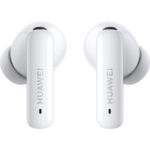

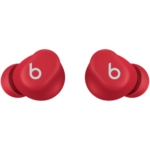

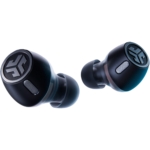

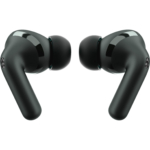







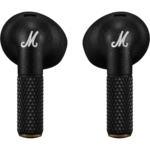

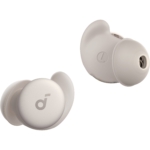

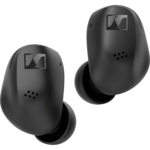

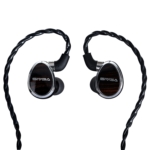




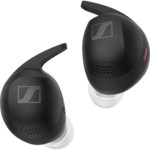








Click “To the Offer” for the Jabra Elite 10. Can’t quite find the Amazon product page eh? Well, this is just a continuing problem that just won’t go away. At least it takes me to amazon.com where I can search and find the product.
Thanks for the info! Sometimes the product link changes. Please try again, it should work now!